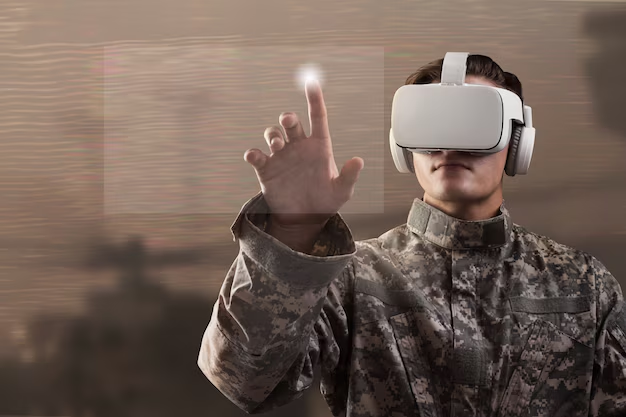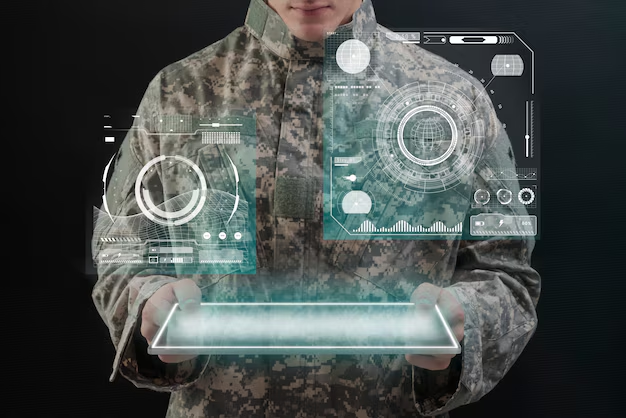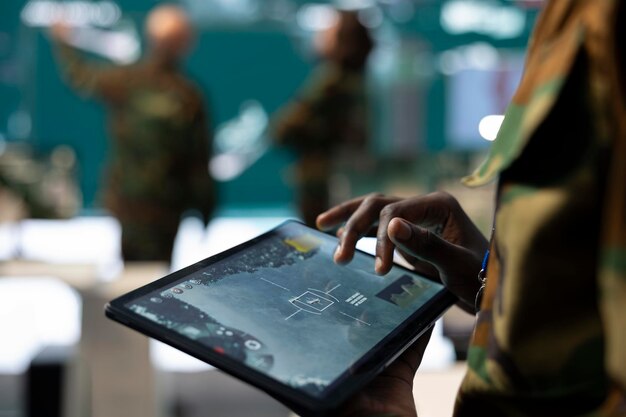In the fast-evolving landscape of modern warfare, communication is the backbone of operational success. The ability to relay information swiftly, securely, and reliably can be the difference between mission success and failure. Wireless networking has revolutionized military communication systems, offering unparalleled mobility, efficiency, and real-time data exchange that traditional wired systems could not provide.
From coordinating complex maneuvers on the battlefield to enabling secure command and control operations, wireless networking has become indispensable in military contexts. The adaptability of wireless systems allows forces to maintain communication in rugged terrains, across vast distances, and even in the face of hostile electronic countermeasures. As military operations grow more dynamic and technologically sophisticated, wireless networking continues to play a pivotal role in empowering defense strategies worldwide.
This article explores the evolution of wireless communication in military systems, its diverse applications, the advanced technologies driving it, and the challenges that come with ensuring robust and secure networks in high-stakes environments. Let’s delve into how wireless networking is shaping the future of military communication.

Evolution of Wireless Communication in the Military
The evolution of wireless communication in the military has been marked by significant technological advancements, each one enhancing the ability to communicate effectively under diverse and challenging conditions. From the early days of telegraphs to today’s cutting-edge, high-speed wireless systems, military communication has undergone a remarkable transformation. Here’s a look at the key milestones:
Early Beginnings: The Telegraph and Radio Era
Wireless communication in the military began in the early 20th century with the introduction of the radio. Prior to wireless technology, military communication relied heavily on wired systems, telegraphs, and messengers, which were slow, limited in range, and vulnerable to disruption. The breakthrough came with the development of radio technology, which allowed for real-time, long-distance communication. During World War I, the military began using radio for tactical communication, enabling more effective coordination between units on the battlefield.

World War II: The Advent of Portable Radios
The use of radio communication advanced significantly during World War II. Military forces began to use portable radios, which allowed soldiers to communicate directly from the front lines to command centers. This period saw the development of more robust, portable systems that could withstand the rigors of combat. The ability to quickly relay information from one location to another became a decisive factor in battlefield strategies, especially in the areas of air and ground coordination.
Cold War and Beyond: Digitalization and Secure Communication
The Cold War era introduced more sophisticated communication technologies, with a focus on encryption and security. The rise of digital technologies in the 1970s and 1980s allowed military communication systems to become more secure and reliable. Digital signals could be encrypted, preventing unauthorized access and interception. Secure communication channels became crucial as military operations grew more complex and threats to national security intensified.
During this period, satellite communication (SATCOM) was introduced, enabling long-range, real-time communication across global distances. Military forces could now communicate even in remote or hostile environments where traditional communication infrastructure did not exist. This expansion of connectivity was essential for operations in distant regions, from the deserts of the Middle East to the mountains of Asia.
The 1990s: The Emergence of Cellular and Networked Communications
In the 1990s, the military embraced the growing potential of cellular networks and the internet. This period marked the development of mobile communication systems, enabling soldiers to access information from centralized databases and share live feeds. The introduction of tactical networks allowed military personnel to coordinate efforts across dispersed units. The rise of mobile communication systems also led to the integration of wireless networking with GPS technologies, providing real-time positioning information for both ground and aerial operations.
21st Century: The Era of High-Speed, Secure Wireless Networks
In the early 2000s, wireless networking entered the digital age with the deployment of high-speed communication systems. The military adopted advanced technologies like Wi-Fi, Bluetooth, and 3G/4G networks, which enabled faster and more reliable communication across various units. Secure wireless networks were developed to support voice, data, and video transmission, enhancing situational awareness and coordination during military operations.
The introduction of Software-Defined Radios (SDR) allowed military communication systems to become more flexible, enabling them to adapt to different communication protocols and frequencies without the need for hardware changes. This innovation made it easier for military forces to respond to rapidly changing environments and emerging threats.
Today and Beyond: 5G and the Future of Military Wireless Communication
Today, wireless communication in the military is undergoing a transformation with the advent of 5G technology. The increased bandwidth, low latency, and ultra-reliable connections offered by 5G are set to revolutionize military communication systems. 5G will support advanced applications like autonomous vehicles, drones, and real-time augmented reality (AR), which require continuous, high-speed data exchange. Additionally, military forces are exploring the use of artificial intelligence (AI) and machine learning (ML) to optimize network performance, ensure security, and manage complex communications across vast areas.
Looking further into the future, the emergence of 6G technology promises even greater advancements in wireless communication. 6G networks are expected to provide virtually instantaneous communication and a seamless connection for a variety of military applications, ranging from tactical operations to integrated defense systems.
The evolution of wireless communication in the military has been a journey of innovation, from simple radio transmissions to complex, highly secure, and resilient networks that support modern warfare strategies. As new technologies continue to emerge, military forces will increasingly rely on wireless systems to stay connected, improve operational efficiency, and maintain a strategic advantage on the global stage.
Key Applications of Wireless Networking in Military Communication
Wireless networking has revolutionized military communication by enabling seamless, secure, and real-time transmission of data across various domains of military operations. The flexibility and mobility of wireless systems ensure that military forces can maintain effective communication even in the most challenging environments. Below are some of the key applications of wireless networking in military communication:

Battlefield Communication
On the battlefield, effective communication is crucial for ensuring coordination between units, relaying tactical updates, and responding to rapidly changing situations. Wireless networking allows soldiers, vehicles, and command centers to stay connected even in remote or hostile terrains. Real-time voice, video, and data communication enable troops to share information about enemy movements, terrain conditions, and tactical adjustments instantaneously.
Mesh networks, in particular, play a significant role in battlefield communication, as they can dynamically adapt to changing conditions and terrain. In the event of a communication node failure, the mesh network automatically reroutes traffic, ensuring that connectivity is maintained throughout the operational area.
Command and Control Systems
Command and control (C2) systems are the backbone of military operations, allowing commanders to make informed decisions based on real-time intelligence and coordinate actions across diverse military units. Wireless networking enhances C2 systems by providing a seamless flow of information between soldiers, equipment, and leadership, ensuring rapid response times and operational efficiency.
With wireless networks, commanders can monitor the status of troops, vehicles, and assets, receive intelligence updates from reconnaissance units, and adjust strategies on the fly. This ability to relay commands swiftly and securely has a direct impact on the success of military operations, especially in dynamic and fast-moving scenarios.
Surveillance and Reconnaissance
Wireless networking plays a vital role in military surveillance and reconnaissance missions, where real-time data transmission is essential for identifying and tracking enemy forces or monitoring sensitive areas. Drones, unmanned aerial vehicles (UAVs), and remote sensors equipped with wireless communication capabilities can relay live video feeds, sensor data, and imagery to command centers, allowing for immediate analysis and decision-making.
These systems provide situational awareness by offering continuous surveillance, even in remote or hazardous locations where traditional communication infrastructure might not be available. Wireless networking enables the seamless integration of various surveillance assets, such as ground sensors and aerial drones, into a unified communication system, enhancing the military’s ability to monitor vast areas and respond promptly to threats.
Logistics and Supply Chain Management
Effective logistics and supply chain management are crucial to maintaining military readiness and ensuring that troops and assets are adequately supplied. Wireless networks enable real-time tracking of equipment, ammunition, medical supplies, and other critical resources across vast distances, allowing military personnel to monitor inventory levels, dispatch supplies, and coordinate resupply operations seamlessly.
Wireless-enabled sensors and RFID tags can track the movement of assets, ensuring that critical supplies reach their destination on time and in optimal condition. This connectivity also aids in maintaining a secure supply chain by providing accurate, up-to-date information about inventory and delivery status, reducing the risk of fraud or theft.
Emergency Response Systems
In military operations, quick and efficient response to emergencies—such as natural disasters, combat injuries, or unforeseen incidents—is essential for saving lives and ensuring mission success. Wireless networks support emergency response systems by facilitating instant communication between first responders, medical teams, and command centers.
For instance, soldiers in the field can use wireless communication systems to report casualties, request medical assistance, and transmit critical data on enemy movements or environmental hazards. Commanders can then coordinate emergency operations, deploy medical units, and allocate resources to where they are needed most, all in real-time.
Tactical Communications for Special Operations
Special operations forces often operate in high-risk environments where conventional communication methods may not be viable. Wireless networks provide these elite units with the flexibility to communicate covertly and securely without relying on fixed infrastructure. Secure, encrypted wireless channels enable them to coordinate operations, share intelligence, and execute missions with precision, even in remote areas where traditional communication networks do not exist.
Moreover, the integration of advanced technologies such as satellite communication and software-defined radios allows special forces to access high-bandwidth data streams, ensuring they have the most up-to-date information at their disposal, whether they are operating in urban areas, jungles, or deserts.
Autonomous and Unmanned Systems
As the military embraces the use of autonomous vehicles, drones, and unmanned systems for various tasks—such as reconnaissance, combat, and logistics—wireless networking has become an essential component of their operation. These systems rely on wireless communication to receive commands, transmit data, and interact with other networked devices.
Wireless networks support the communication needs of unmanned aerial vehicles (UAVs), autonomous ground vehicles, and underwater drones by providing real-time data exchange, enabling remote operators to monitor performance, make adjustments, and ensure that the systems remain operational in challenging environments.
Secure Communication in High-Risk Environments
In military operations, ensuring the confidentiality, integrity, and availability of communication is paramount. Wireless networking systems are designed with advanced encryption, authentication, and anti-jamming technologies to protect sensitive information from interception or disruption. These secure communication channels allow military forces to transmit intelligence, strategic plans, and other classified data without fear of cyber-attacks or eavesdropping.
For example, satellite communications (SATCOM) are widely used for secure, long-range communication, while technologies like Software-Defined Radios (SDR) and Frequency Hopping Spread Spectrum (FHSS) techniques help minimize the risk of jamming and interception. The security of military wireless networks ensures that communication remains confidential and operational even under adversarial conditions.
Tactical Data Links
Tactical data links (TDLs) are integral to military operations, enabling the exchange of real-time data between aircraft, ships, ground units, and command centers. These data links rely on secure wireless communication to transmit critical information, such as target coordinates, flight plans, and sensor data, between different military assets.
Wireless networking plays a crucial role in ensuring that these systems remain robust and resilient in combat situations. TDLs support situational awareness and enhance coordination between various military units, allowing for more precise and effective operations.
Training and Simulation Systems
Wireless networking also plays a crucial role in military training and simulation systems. These systems allow for the real-time exchange of data between simulation environments, soldiers, and instructors, creating an immersive and dynamic training experience. Wireless connectivity ensures that all participants in a simulation—whether on the battlefield, in the air, or at sea—can interact with one another seamlessly, making training exercises more realistic and effective.
By integrating wireless technologies into training scenarios, the military can simulate complex combat situations, improve decision-making processes, and enhance readiness without the need for large-scale deployments.

Conclusion
The role of wireless networking in military communication is paramount in ensuring operational success across diverse and challenging environments. As military forces increasingly rely on real-time data exchange, advanced wireless technologies such as 5G, cognitive radios, and AI-powered network optimization are shaping the future of secure, high-speed, and resilient communication. These technologies not only enhance the speed and efficiency of military operations but also ensure the adaptability and security required in the face of evolving threats.
As the landscape of warfare continues to evolve, military communication systems will rely even more on the advancements in wireless networking to maintain a tactical edge. The integration of cutting-edge technologies will ensure that military personnel remain connected, informed, and prepared, regardless of location. The continuous development of these technologies is essential for enhancing situational awareness, coordination, and the effectiveness of defense operations in an increasingly interconnected world.












